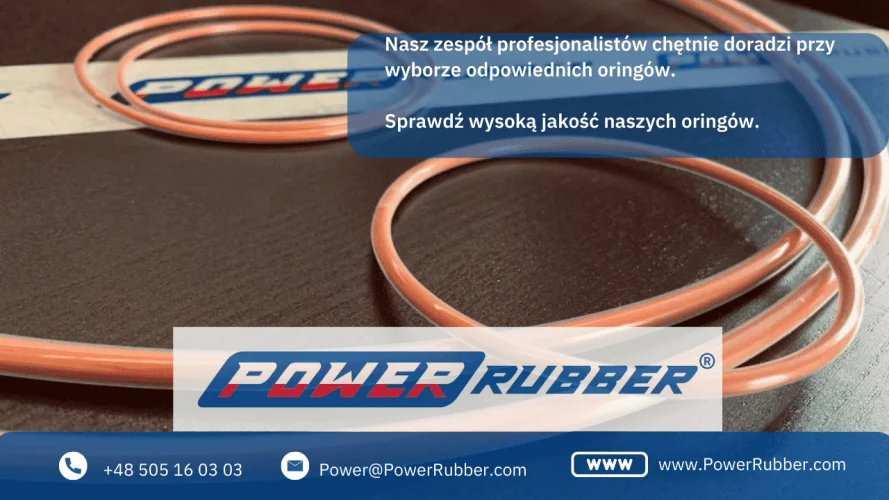Rubber O-rings Standards Standards
O-rings are closed O-rings. Various types of rubber are used for their production. O-rings are used in many applications in a variety of industries around the world. O-rings come in a wide range of sizes. In connection with the above, special standards for the sizes of the most commonly used O-rings have been developed.
American Standard AS568
AS 568 (Aerospace Standard 568) is an American standard that describes 379 O-rings. The AS 568 standard specifies inside diameters, sections, tolerances and size designation for O-rings. All sizes are listed in ascending inside diameter (ID) in fractional and decimal sizes. According to the AS 569 classification system, all dimensional tolerances comply with the ISO 3601-1A standard.
British Standard BS 1806 / BS 4518 / ISO 3601
BS 1806 was created by the British Standards Institute and lists all imperial standard sizes. The above standard contains the 5 major section groups in AS568 and several sizes that fall within the 1/4 "nominal section group. BS 1806 has been superseded by BS ISO 3601.
ISO 3601 is a standard developed by the International Organization for Standardization. The above standard is divided into two classes:
- Grade A O-rings - These have the same tolerances as those used in AS568, which are narrower than those of Grade B O-rings. Type A O-rings are inch sizes that are suitable for industrial applications. The ISO 3601-1 size code is the same as the AS 568 dash number.
- Grade B O-rings -have slightly wider tolerances and are suitable for general applications. These are metric sizes intended for aerospace applications. The first digit of the size code indicates the section group (A-E) and the last four indicate a diameter rounded to 0.1 mm inside the O-ring.
BS 4518 is a British standard that specifies British Standard metric sizes. The O-ring size code is defined by a four-digit number indicating the O-ring ID in tenths of a millimeter, followed by a dash and two numbers indicating the cross-section of the O-ring, also in tenths of a millimeter.
French Standard NF T 47-501
The French Standards Institute has developed the NF T 47-501 standard, which is very similar to ISO 3601-1, both in terms of size and reference to size. The reference codes in the NF 47-501 standard are identified by a letter corresponding to each of the 5 section groups (AE), 4 numbers indicating the ID (rounded to 0.1 mm), a second letter indicating the accuracy class and a third letter indicating the visual (control) class. Precision class marked with:
- the letter A is suitable for aviation applications
- the letter G is suitable for general use
The visual classes are N (1.0 AQL) and S (0.65 AQL)
German Standard DIN 3771
The German Institute of Standards (Duetsches Institut fur Normung) has developed the DIN 3771 standard, according to which the sizes of O-rings are identified by ID x C / S followed by a letter indicating the quality level and a code indicating the rubber polymer and IRHD hardness. The DIN 3771 standard defines two quality levels:
- N - normal quality (1.0 AQL)
- S - special quality (0.65 AQL)
Swedish Standard SMS 1586
SMS 1586 refers to the Swedish mechanical standard for the sizes of sealing rings. The SMS 1586 classification system describes 140 O-rings in two groups:
- D - This group describes 65 O-rings intended for dynamic and static installations. Each size is marked with its own dimension: ID x section.
- S - This group describes 75 O-rings intended primarily for static applications. Each size is marked with its dimension: ID x section.
The dimensions of the O-rings in the metric system are exactly matched, that is, a 1 mm O-ring will have a cross section of 1 mm. To ensure a proper sealing of the ring, the filled space must be approx. 10-15% smaller than its cross-section.
Japanese Standard JIS B 2401
JIS B 2401 is the Japanese industry standard for O-ring sizes. The JIS B2401 grading system has two groups of O-ring sizes. The first is for O-rings for general and space applications, while the second is divided into four sections.
The above standard is divided into four sections depending on the application:
- P series - mobile (dynamic)
- G series - fixed (static)
- S series - special sizes
- V series - vacuum flange
Each section contains ascending numeric codes. This solution is intended to help you refer to the size of the O-ring.
The JIS B 2401 standard describes a total of 1,006 O-rings in three groups:
- Lotnicza - this group describes 367 O-rings and corresponds to the standard in the ISO 3601-1 metric system (with a few additional sizes). In the aviation group, each size is marked with its dimension: ID x section. The letter "A" is added after the dimension to indicate aeronautical use.
- General Purpose - This group describes 445 O-rings and conforms to the ISO 3601-1 metric standard (with some additional sizes). In the general purpose group, each size is marked with its dimension: ID x section. A "G" is added after the dimension to indicate general purpose use.
- Traditional - 194 O-rings are featured in this group. Each size is identified by a letter followed by a face number. The letter indicates one of the sections depending on the application (P - dynamic, G - constant, V - vacuum flange).
The dimensions of the O-rings in the metric system are exactly matched, that is, a 1 mm O-ring will have a cross section of 1 mm. To guarantee a proper sealing of the ring, the filled space must be approx. 10-15% smaller than its cross-section or up to 10% larger depending on the use: internal or external. Useful articles and guides:
- How to dimension rubber O-rings?
- Rubber o-rings. Guide
- Buy rubber O-rings online here
